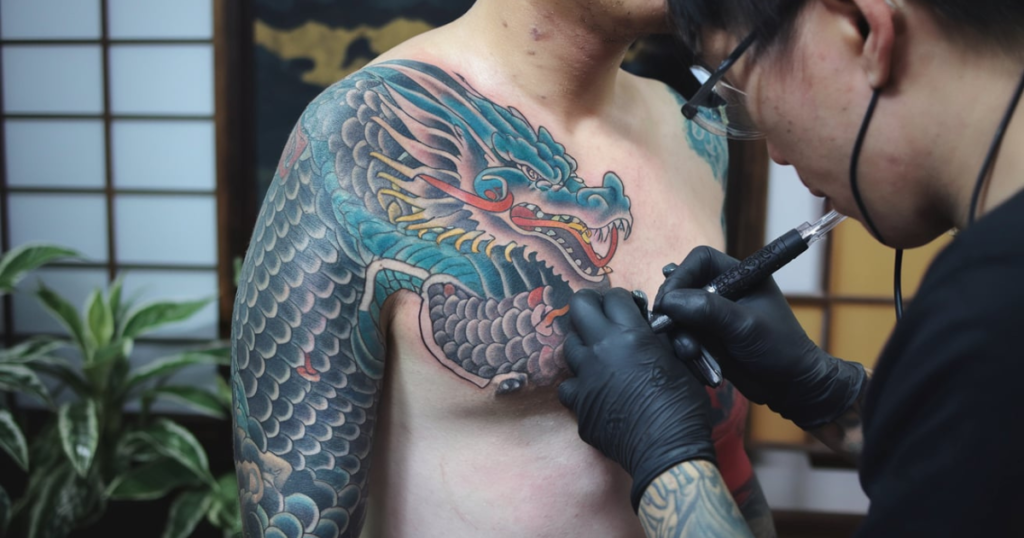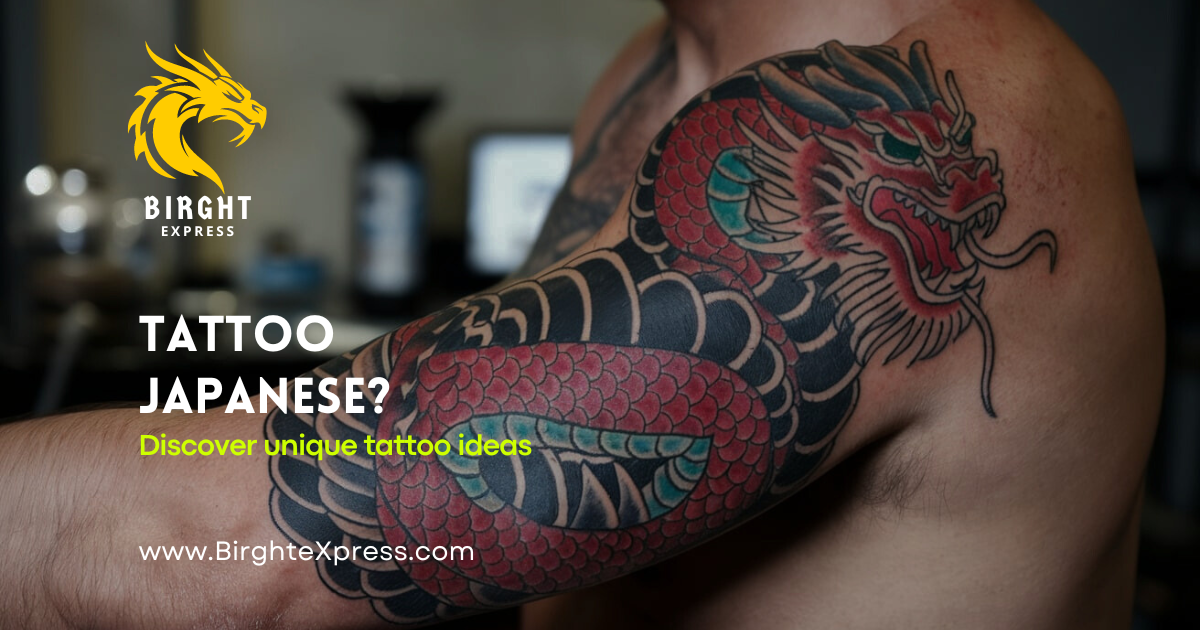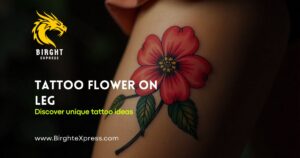A Japanese tattoo is a traditional form of body art. It often features symbols like dragons, koi fish, and cherry blossoms. These tattoos have deep cultural meanings and are known for their bold, intricate designs. They are admired worldwide for their beauty, craftsmanship, and symbolism. Tattoo Japanese
Discover the beauty of stunning Japanese tattoo designs that blend tradition with artistry. These tattoos are unique, bold, intricate, and rich in cultural meaning. Each design tells a story, from powerful dragons to elegant koi fish and cherry blossoms. Explore these incredible designs and find the perfect inspiration for your next tattoo.
Stunning Japanese tattoo designs combine traditional symbols with modern creativity. They feature detailed images like dragons, koi fish, and cherry blossoms. Each tattoo is unique, reflecting personal stories and cultural meanings. These designs are perfect for those seeking distinctive and meaningful body art. Everybody can find a design that they like, from statement sleeves to tiny, detailed pieces.
Japanese Tattoos: Unveiling the Artistry and Mystique
Japanese tattoos are famous for their detailed artistry and deep cultural roots. They often feature powerful symbols like dragons, koi fish, and cherry blossoms. Each design carries a special meaning, such as strength, perseverance, or beauty. These tattoos reflect a rich history and are admired for their bold, intricate designs.
The colours and shading techniques used in Japanese tattoos make them truly unique. They blend traditional methods with modern styles, creating stunning visual effects. Whether it’s a full-body tattoo or a small piece, the mystique of Japanese tattoos draws people in. These tattoos are not just body art; they are a form of storytelling and personal expression.
The Age-Old Tapestry: A Brief History of Japanese Tattoos
Japanese tattoos have a long history that dates back thousands of years. Originally, they were used as symbols of status, religion, or even punishment. Over time, tattoos became associated with warriors, representing bravery and loyalty. By the Edo period, tattoos evolved into an art form, admired for their beauty and intricate designs.
As tattooing grew, it became popular among various social groups, including artists and labourers. The designs often featured traditional imagery like koi fish, dragons, and flowers. Despite periods of social stigma, Japanese tattoos remained a powerful cultural expression. Today, they are celebrated worldwide for their rich history and artistic craftsmanship.
The Japanese Tattoo Landscape Today: A State of Play
The Japanese tattoo landscape today is a mix of tradition and modernity. While traditional designs like koi fish and dragons remain popular, many artists are blending old styles with new techniques. Tattoo culture has become more accepted, especially among younger generations, though some social stigma still exists. Despite this, Japanese tattoos are celebrated for their artistry and depth of meaning.
Tattoo studios in Japan are now embracing diverse styles, attracting both locals and tourists. International influences have also shaped the scene, with artists experimenting with new ideas while respecting tradition. Events like tattoo conventions showcase the evolving art form. Overall, Japanese tattoos continue to captivate people worldwide with their unique blend of history and innovation.
As the global tattoo industry grows, more people are discovering the allure of Japanese designs. This increased interest has led to collaborations between Japanese artists and international tattooists, further enriching the art form. Social media has also played a role, allowing artists to share their work and connect with a broader audience. The future of Japanese tattoos looks bright as they continue to evolve and inspire.
The Allure of Japanese Tattoos
Rich Symbolism: Japanese tattoos often feature powerful images like dragons, koi fish, and samurai, each with deep cultural meanings.
Intricate Designs: The artistry involves detailed lines and vibrant colours that make these tattoos visually striking.
Connection to Tradition: These tattoos represent a link to Japanese history and tradition, adding depth to their appeal.
Balance of Strength and Elegance: The designs combine strength and elegance, resonating with many people.
Personal Expression: Japanese tattoos offer a unique way to express personal values and beliefs through art.
Yakuza and Tattoos: The Unbreakable Link
The allure of Japanese tattoos lies in their rich symbolism and intricate designs. These tattoos often feature powerful images like dragons, koi fish, and samurai, each carrying deep cultural meanings. The artistry involved, with detailed lines and vibrant colours, makes them stand out. People are drawn to Japanese tattoos not only for their beauty but also for the stories they tell.
Beyond aesthetics, Japanese tattoos represent a connection to history and tradition. The balance of strength and elegance in these designs appeals to many. Whether large or small, they offer a unique way to express personal values and beliefs. The combination of artistry, symbolism, and cultural depth makes Japanese tattoos truly captivating.
Yakuza and Tattoos: The Unbreakable Link Deciphering the Ink: Delving Deeper into Common Japanese Tattoo
Japanese tattoos are rich in symbolism and cultural meaning, celebrated for their diverse designs. They often feature images like dragons, koi fish, and cherry blossoms, each with its significance. Let’s explore these iconic symbols and uncover the deep meanings they hold. These tattoos blend artistic beauty with storytelling, making each design unique and meaningful.
Dragons
Dragons are powerful symbols in Japanese tattoos, representing strength and wisdom. They are often depicted with intricate details and vibrant colours. In Japanese culture, dragons are seen as protectors and bringers of good fortune. Their majestic and fierce appearance makes them a popular choice for tattoos. They also symbolize the balance of nature and the flow of life.
Koi Fish
Koi fish are popular in Japanese tattoos, symbolizing perseverance and strength. They are often shown swimming upstream, representing the ability to overcome obstacles. The vibrant colours and flowing shapes make them visually striking. Koi fish tattoos are also associated with good luck and success. Additionally, they can symbolize personal growth and transformation.
Cherry Blossoms
Cherry blossoms are a beautiful symbol in Japanese tattoos, representing the fleeting nature of life. They are known for their delicate pink petals and short blooming period. These flowers embody the beauty of impermanence and renewal. Cherry blossom tattoos often signify new beginnings and the appreciation of life’s moments. They also represent the spirit of grace and the elegance of nature.
Tigers
Tigers are powerful symbols in Japanese tattoos, often representing courage and strength. Their fierce appearance and striking patterns make them a popular choice for bold designs. In Japanese culture, tigers are seen as protectors against evil spirits and danger. They symbolize bravery and the ability to face challenges head-on.
Tigers are also associated with confidence and leadership. Their majestic and dominant presence in tattoos reflects a sense of authority and power. The detailed artwork of tigers in tattoos showcases their beauty and ferocity. These tattoos not only highlight the tiger’s physical traits but also convey deeper meanings of strength and resilience.
The Craft: Japanese Tattoo Techniques
Japanese tattoo techniques are known for their intricate and detailed artistry. Traditional methods often use hand tools like the “tebori,” which involves carving ink into the skin manually. This technique requires great skill and patience, resulting in deeply detailed designs. The hand-poking method is valued for its precision and the unique texture it creates.
Modern Japanese tattoos also use machines but maintain traditional styles and techniques. Artists focus on perfecting shading and colour gradients to enhance the design’s depth and vibrancy. Whether using traditional or modern tools, the craftsmanship in Japanese tattoos reflects years of practice and dedication. The combination of old and new techniques continues to produce stunning and meaningful artwork.
Finding Your Perfect Irezumi: Japanese Tattoo Ideas

Finding your perfect Irezumi involves exploring various Japanese tattoo designs to match your style. Start by considering classic symbols like dragons, koi fish, or cherry blossoms, each with its unique meaning. Look at different styles and artist portfolios to see what resonates with you. Think about how a design reflects your values or stories. Working closely with a skilled artist will help you create a tattoo with two meanings meaningful and visually stunning.
Choosing the Canvas: Ideal Body Locations for a Japanese Tattoo
Choosing the right body location for a Japanese tattoo depends on the design and your personal preference. Large, detailed tattoos, like full sleeves or back pieces, work well on areas with ample space. Popular spots include the arms, back, and legs, where the artwork can flow and be displayed fully. Smaller designs can fit nicely on areas like the chest or side. Consider how visible you want the tattoo to be and how it will complement the design.
European Champions of Japanese Tattooing
European champions of Japanese tattooing are renowned for their skill in blending traditional Japanese art with modern tattoo techniques. These artists often study Japanese styles deeply to master the intricate designs and cultural meanings. They bring their unique perspectives to the art form, creating stunning pieces that honour traditional aesthetics while adding their personal touch. Their work has gained international recognition, showcasing how Japanese tattoo art can be adapted and celebrated across different cultures. European artists continue to push the boundaries of Japanese tattooing, contributing to its global appreciation.
Inking a Career: Becoming a Japanese Tattoo Specialist
Becoming a Japanese tattoo specialist involves a deep commitment to learning and mastering traditional techniques. Start by studying Japanese tattoo art and its cultural significance, often through apprenticeships with experienced artists. It’s essential to practice extensively, focusing on details like shading and line work to capture intricate designs. Building a strong portfolio and gaining experience in various styles will help establish your reputation.
Success as a Japanese tattoo specialist also requires dedication to continuous learning and improvement. Keep up with new trends and techniques while preserving traditional methods. Attending conventions and establishing contacts in the tattoo community can yield significant exposure. In this distinctive and creative field, you can build a fulfilling career with passion and persistence.
Famous Japanese tattoo artists
Famous Japanese tattoo artists are renowned for their mastery of traditional and modern techniques. Artists like Horiyoshi III and Horitoku have become legends in the tattoo world, known for their detailed and vibrant designs. They have dedicated years to perfecting their craft and preserving the cultural heritage of Japanese tattoos. Their work often features classic themes like dragons, koi fish, and cherry blossoms.
These artists are highly respected for their skill and artistry, and many have their studios in Japan and abroad. Their tattoos not only reflect technical excellence but also deep cultural significance. By studying their work, aspiring tattoo artists can learn about the rich history and intricate techniques of Japanese tattooing. Their influence continues to inspire and shape the global tattoo community.
FAQ’s
What are some popular themes in Japanese tattoo designs?
Popular themes include dragons, koi fish, cherry blossoms, and samurai. Each design has deep cultural meanings and symbolism.
How long does it take to complete a Japanese tattoo?
The time varies depending on the size and complexity. Small tattoos might take a few hours, while large pieces can take multiple sessions.
Do Japanese tattoos have specific meanings?
Yes, Japanese tattoos often carry specific meanings. For example, dragons represent strength, while koi fish symbolize perseverance.
Are Japanese tattoos only done in traditional styles?
No, Japanese tattoos can be traditional or modern. Many artists blend traditional elements with contemporary techniques to create unique designs.
How can I find a skilled Japanese tattoo artist?
Look for artists with a strong portfolio and positive reviews. Checking their experience with Japanese designs and asking for recommendations can help you find a skilled artist.
Conclusion
Stunning Japanese tattoo designs offer a rich blend of tradition and artistry. These tattoos are celebrated for their intricate details and deep cultural meanings, making each design unique. From dragons to cherry blossoms, every element tells a story and adds personal significance.
Choosing a Japanese tattoo allows for a beautiful expression of personal values and aesthetics. Whether you prefer a traditional design or a modern twist, these tattoos stand out for their elegance and depth. Embrace the artistry and meaning behind Japanese tattoos to create a truly memorable piece of body art.
Read More :
- Ancient Mayan Tattoos
- Attractive Meaningful Womens Sleeve Tattoo Design
- Feminine Dragon And Flower Tattoos
- Hawk Tattoo Meaning

Russell is your go-to expert on fashion, food, tattoos, and travel. With a keen eye for style and a passion for exploring new tastes and destinations, he brings insightful and engaging content to our site.











